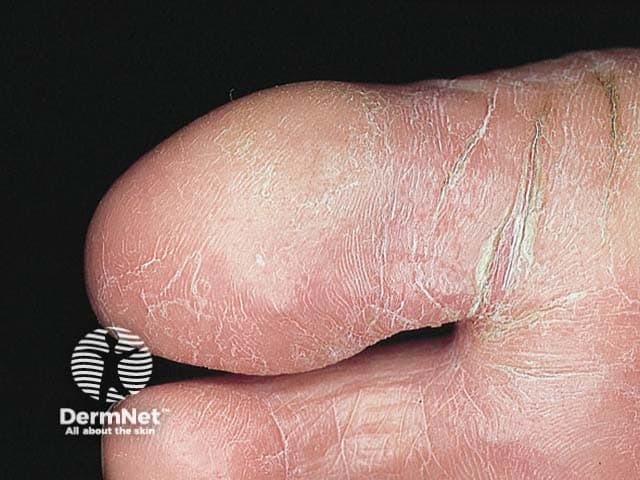Main menu
Common skin conditions

NEWS
Join DermNet PRO
Read more
Quick links
Mixed diagnoses – 10 cases (6 of 11)
For each of the ten cases, study the image(s) and then answer the questions. You can click on the image to view a larger version if required.
Each case should take approximately five minutes to complete. There is a list of suggested further reading material at the end of the quiz.
When you finish the quiz, you can download a certificate.
Case 2

What is this condition?
This is juvenile plantar dermatosis, a condition confined to pre-adolescent children, especially boys. The condition may be seen as soon as the child can walk and disappears before adulthood. It is more prevalent in summer months, giving rise to the suggestion that hyperhidrosis may have a role in aetiology. On examination, the skin of the plantar aspect of the forefoot and the tops of the toes is red, dry and fissured. Sometimes the heels and/or the entire sole are also affected but the skin between the toes is spared.
How would you treat it?
There is no specific treatment. Juvenile plantar dermatosis does not respond to antibiotics or antifungal agents, but a dermatophyte infection should be ruled out by mycological examination. Persistent or severe cases should be patch tested to identify relevant contact allergy, but this is rarely responsible for the appearance seen. Topical steroids are rarely useful because there is no inflammation. It can be useful to restrict the child's activity, to allow fissures to heal. Keep the foot cool and dry, and avoid plastic, rubber, nylon and vinyl footwear. An occlusive emollient such as Vaseline can be applied twice daily. Wearing two pairs of absorbent socks and close-fitting shoes may reduce friction and the fissuring.
